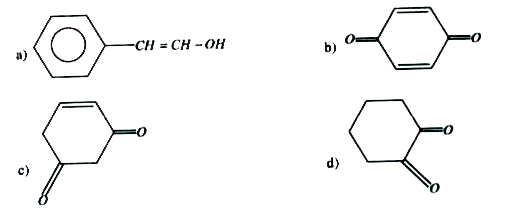I1andI2 of an element are 700 and 1200 kJmol−1 If 1000kJmol−1 energy is supplied to the gaseous atomic element and the ionisations occur in succession, find the ratio of monovalent and divalent cations. Solution in Telugu
Step by step video & image solution for I_1 and I_2 of an element are 700 and 1200 kJmol^(-1) If 1000 kJ mol^(-1) energy is supplied to the gaseous atomic element and the ionisations occur in succession, find the ratio of monovalent and divalent cations. by Chemistry experts to help you in doubts & scoring excellent marks in Class 11 exams.
Updated on:21/07/2023Topper's Solved these Questions
- PERIODIC CLASSIFICATIONBOOK - AAKASH SERIESCHAPTER - PERIODIC CLASSIFICATIONEXERCISE - SUBJECTIVE EXERCISE - 3 (LONG ANSWER QUESTIONS)
2 Videos
- PERIODIC CLASSIFICATIONBOOK - AAKASH SERIESCHAPTER - PERIODIC CLASSIFICATIONEXERCISE - SUBJECTIVE EXERCISE - 3 (SHORT ANSWER QUESTIONS)
9 Videos
- PERIODIC CLASSIFICATIONBOOK - AAKASH SERIESCHAPTER - PERIODIC CLASSIFICATIONEXERCISE - SUBJECTIVE EXERCISE - 2 (SHORT ANSWER QUESTIONS)
13 Videos
- ISOMERISM BOOK - AAKASH SERIESCHAPTER - ISOMERISM EXERCISE - ADDITIONAL PRACTICE EXERCISE ( PRACTICE SHEET (ADVANCED) INTEGER TYPE QUESTIONS)
10 Videos
- PERIODIC PROPERTIESBOOK - AAKASH SERIESCHAPTER - PERIODIC PROPERTIESEXERCISE - LEVEL-II (TYPE -II) (PRACTICE SHEET -3 (SUBJECTIVE/ ANALYTICAL TYPE QUESTIONS ))
8 Videos
Similar Questions
What is electronegativity? How is this useful in understanding the nature of elements?
View SolutionClassify the elements on the basis of their oxides.
View SolutionAs atomic number increases, atomic size increases in a group and decreases along a period . Give reasons for this behaviour.
View SolutionTautomerism is exhibited by X number of compounds among the following. What is X.

View SolutionWhat is the valency possible to Arsenic with respect to oxygen and hydrogen?
View SolutionThe five successive energies of an element are 800, 2427, 3658, 25024 and 32824 kJ mol^(-1) respectively. The number of valence electron is
View SolutionThe first three successive ionisation energies of an element X are 520, 7297 and 11810 kJ mol−1 respectively. The element X belongs to
View SolutionThe first three successive ionisation energies of an element Y are 900, 1757 and 14850 kJ mol−1 respectively. The element Y belongs to
View SolutionThe first three successive ionisation energies of an element Z are 1402, 2858 and 4576 kJ mol^(-1) respectively. The element Z belongs to group
View SolutionThe first three successive ionisation energies of an element M are 800, 2427 and 3638 kJ mol^(-1) respectively. The element M belongs to group
View SolutionThe ionisation energy of gaseous Na atoms is 495.8KJmol−1. The lowest possible frequency of light that can ionise a Na atom is
View SolutionValues of 1st four ionisation energies (kJ/mol) of an element are respectively 496, 4563, 6913, 9541 the electronic configuration of that element can be.
View SolutionI1 and I2 of an element are "700" and 1200KJ/ mole respectively if ,1000KJ/ mole energy is supplied to the gaseous atomic element and the ionisation occur in succession,the ratio of monovalent and divalent cations.
View SolutionI1 and I2 of an element are 700 and 1200 kJmol− If 1000 kJ mol−1 energy is supplied to the gaseous atomic element and the ionisations occur in succession, find the ratio of monovalent and divalent cations.
View SolutionThe five successive energies of an element are 800,2427,3658,25024 and 32824kJmol−1 respectively. The number of valence electron is
View Solution
